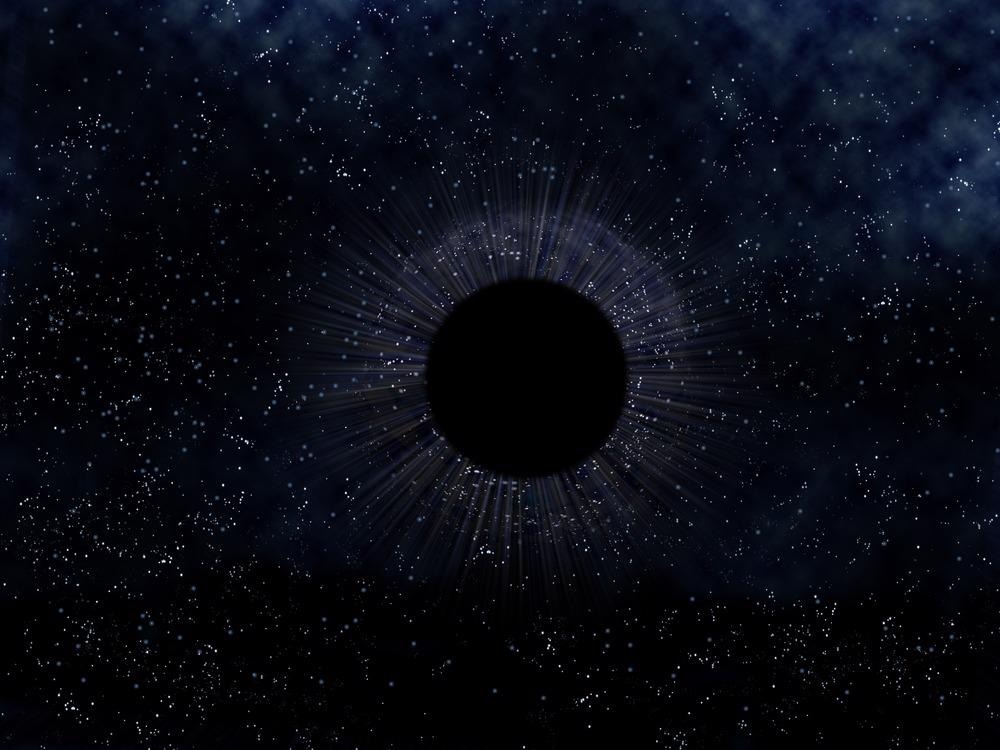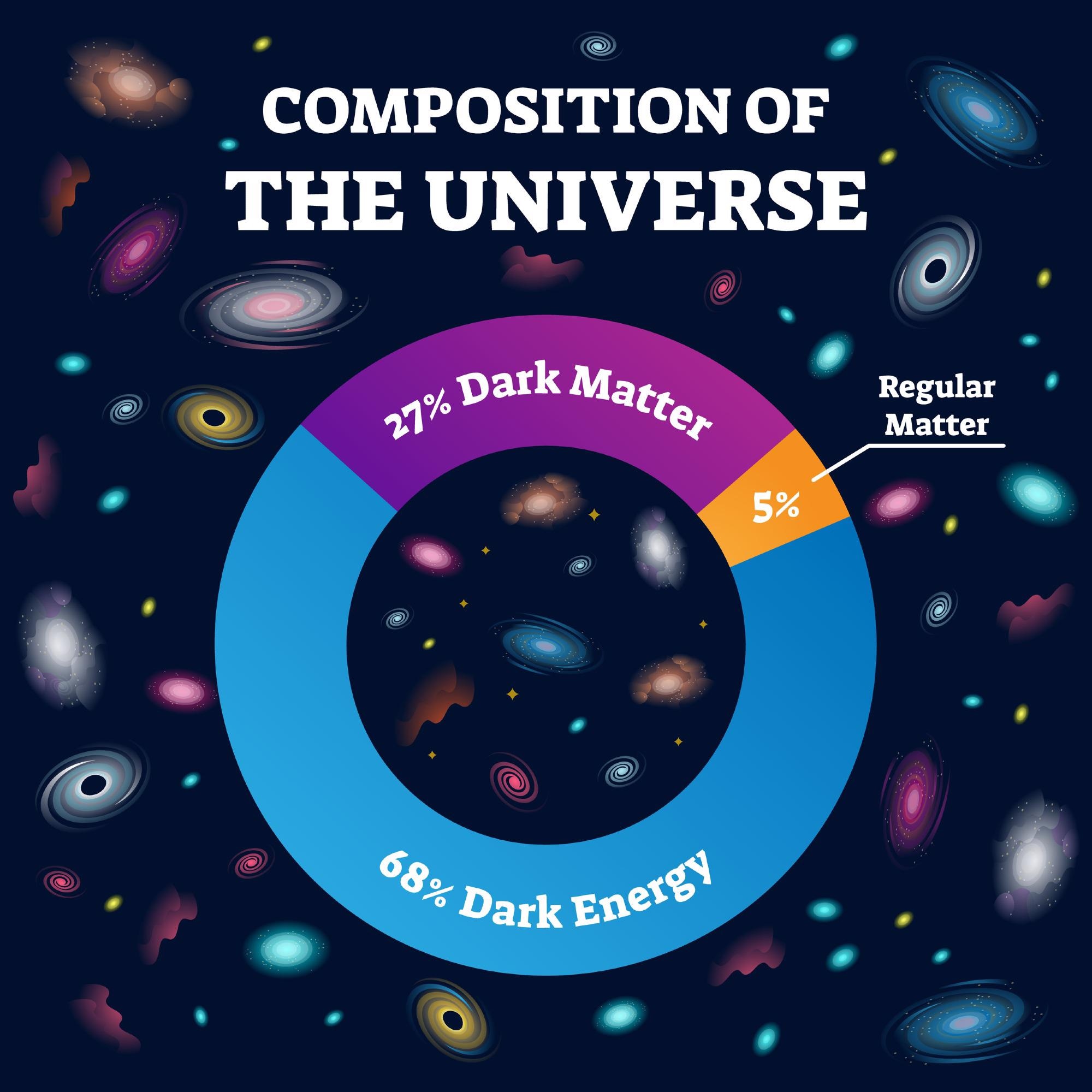As the search for dark matter and its constituent particles continues, two recent experiments put a new spin on this mystery.

Image Credit: Paul Fleet/Shutterstock.com
There is a giant hole in our understanding of the Universe and its contents - we have no clue what the majority of the Universe is made up of.
The everyday matter that surrounds us and the types of energy we are familiar with account for just 5 percent of the Universe’s contents. Dark energy, the force that is driving the acceleration of the Universe’s expansion, accounts for 68 percent of the Universe’s energy and matter budget.
The other 27 percent is accounted for by dark matter.
Dark matter differs from everyday matter that makes up everything we see around us because it doesn’t seem to interact with ordinary matter - nor does it interact with light like ordinary matter, making the prefix “dark” appropriate.
Fortunately, we can infer the presence of dark matter because despite not “feeling” three of the four fundamental forces of nature; electromagnetism, the strong nuclear force, and the weak nuclear force, it does feel gravity.
In fact, the discovery of gravity was the result of observation of distant galaxies that revealed without its presence those conglomerations of stars, gas, and dust wouldn’t have enough gravitational influence to prevent themselves from flying apart.
Using gravity is still the best way to infer the presence of dark matter.
Because of its weakly interacting nature, we know that dark matter isn’t made of particles like protons and neutrons like everyday matter. As these are particles called baryons, dark matter is also known as non-baryonic matter.
This means the search is on to identify the kind of particles that could comprise dark matter. One of the possible suspects suggested by some researchers is Weakly Interacting Massive Particles (WIMPs). These would be slow-moving particles, described as “cold” by astrophysicists, more massive than protons.

Image Credit: VectorMine/Shutterstock.com
The problem with WIMPs is that as of yet, experiments like the LUX Dark Matter Collaboration in the US and the PandaX-II Collaboration in China, which are designed to find them, have turned up nothing.
That has led to the suggestion of other hypothetical particles as dark matter candidates, including a type of particle called an axion. Axions or axion-like particles would have zero-spin and would thus be able to interact with mass with a range of strengths.
A multi-institutional team of researchers from Israel is working on a way to constrain the properties of axions using a device called a Floquet quantum detector that could lead to a better picture of the properties of dark matter.
The researcher’s work is described in a paper published in the latest edition of the journal Science Advances.
A New Spin On Dark Matter
A Floquet quantum detector is essentially a shielded glass cell that is filled with isotopes of rubidium and xenon.
In order to polarize both the electronic spin — a property of particles connected to their magnetic angular momentum — and the nuclear spin of the rubidium-85 and xenon-129 isotope atoms, the team blasted them with a laser. They then used another laser in order to measure the atom’s spin charges.
The concept underlying this experimental setup is that the oscillating fields of axions should affect the spin of the xenon atoms when they come close to them. Applying a magnetic field to the cell constrains the atom’s spin to a certain range of frequencies.
After conducting the Floquet detector experiment 3,000 times over the course of five months, the team failed to detect a trace of axion-like dark matter.
However, because the Floquet field created should have a frequency that is equal to the difference between the nuclear magnetic resonance (NMR) and the electron paramagnetic resonance, what they did was place a constraint on the upper limit of axion-like particle coupling. This could help to guide the search for dark matter in the future.
This is not the first time that spin has been suggested as a way of detecting dark matter and unlocking the nature of this mysterious form of matter.
In late 2021, researchers from Xinhua at the University of Science and Technology of China (USTC) of the Chinese Academy of Sciences and the Helmholtz Institution suggested that a new quantum technique called “spin-based amplifier” could realize an ultrahigh precision search for axion-like particles. This would be beyond the bounds placed by astrophysical observations.
The research, published in the journal Nature Physics, suggested that axion-like particles could form an exotic magnetic field oscillating at its Compton frequency on the nucleus. These researchers also used a vapor cell containing spatial overlapping xenon-129 isotope atoms, this time with atoms of the isotope rubidium-87.
Again, like the experiment reported this year, the team found no evidence of axion-like dark matter. What this experiment did provide was conceptual proof that searches for this elusive substance can be conducted on table-tops as well as in the depths of space.
Both experiments demonstrate, in their own way, that the net is tightening on one of modern physics’ most enduring and pressing mysteries.
References and Further Reading
Bloch. I. M., Ronen. R., Shaham. R., et al, [2022], “New constraints on axion-like dark matter using a Floquet quantum detector,” Science Advances, https://www.science.org/doi/10.1126/sciadv.abl8919
Jiang. M., Su. M., Garcon. A., Peng. A., Budker. D., [2021], “Search for axion-like dark matter with spin-based amplifiers,” Nature Physics, https://www.nature.com/articles/s41567-021-01392-z
Disclaimer: The views expressed here are those of the author expressed in their private capacity and do not necessarily represent the views of AZoM.com Limited T/A AZoNetwork the owner and operator of this website. This disclaimer forms part of the Terms and conditions of use of this website.